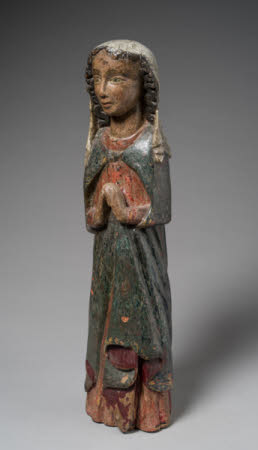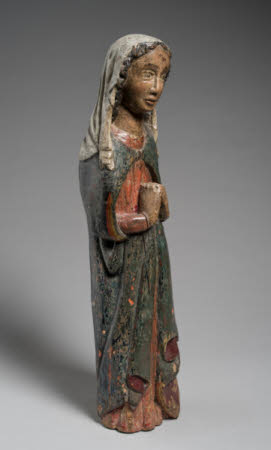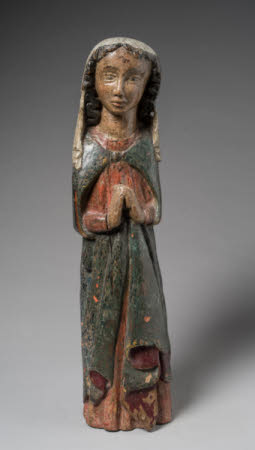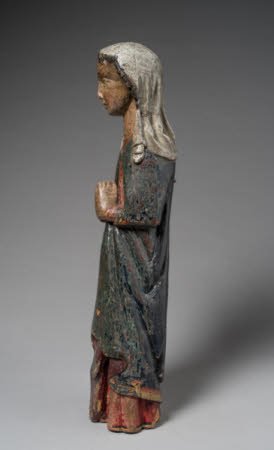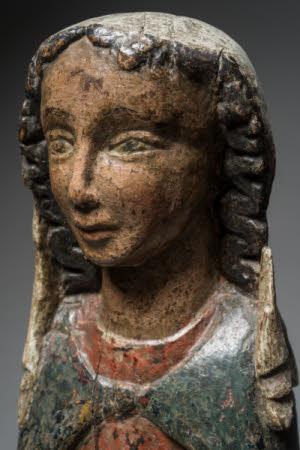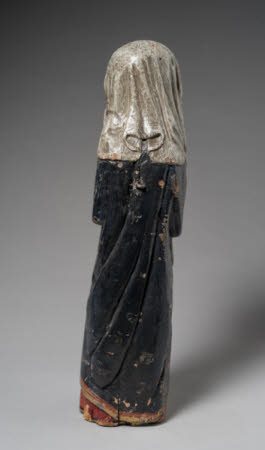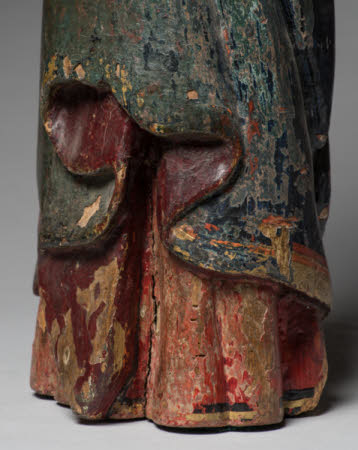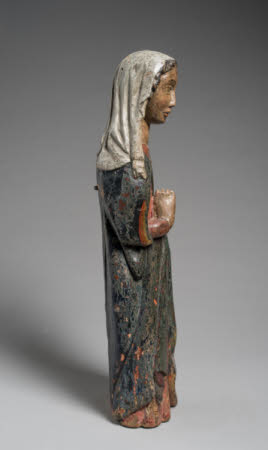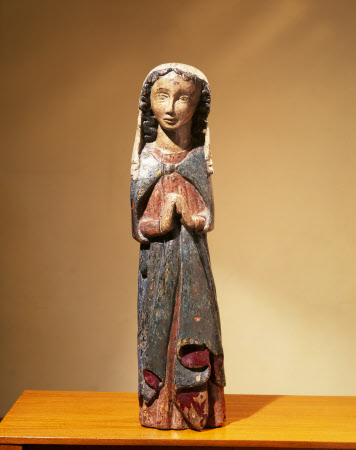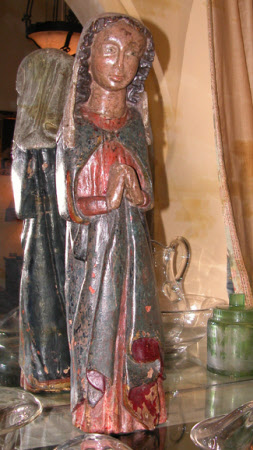A female saint, probably the Virgin Mary, in prayer
probably French
Category
Art / Sculpture
Date
c. 1350 - 1400
Materials
Chestnut
Measurements
67.5 x 16.2 x 13.7 cm
Place of origin
Burgundy
Order this imageCollection
Anglesey Abbey, Cambridgeshire
NT 514522
Summary
Chestnut wood; a female saint, probably the Virgin Mary; French, probably Burgundy; c. 1350-1400. A polychromed (painted) wooden sculpture of a female figure, probably the Virgin Mary, standing with her hands folded in prayer, wearing a blue mantle over a red dress, and a white wimple. Probably made in France in the fourteenth century.
Full description
A polychromed (painted) wooden sculpture of a female figure, probably the Virgin Mary, standing with her hands folded in prayer. She wears a blue mantle over a red dress, and a white wimple. The figure is flattened at the back, with an iron staple ring inserted into the surface, presumably a fixing device. Probably made in France, perhaps in Burgundy, in the fourteenth century. The figure appears to have several layers of polychromy. There are a number of splits in the wood, one hole from a split in the top of the head filled; some areas of paint loss. The figure of a wimpled female with her hands held together in prayer has always been identified as the Virgin Mary, which may well be correct, although the figure has no identifying attributes, so could equally be a female saint. An English carved oak figure of the seated Virgin in the Victoria & Albert Museum, showing her with her hands folded in prayer, forms part of a group depicting the Coronation of the Virgin (Inv. 412-1889; Paul Williamson and Peta Evelyn, Northern Gothic Sculpture 1200-1450, London. Victoria and Albert Museum. 1988. pp. 110-17, no. 29). The sculpture dates from the fourteenth century, the tightly-curled rings of the Virgin’s hair suggesting the second half, c. 1350-1400, as does the relatively simple drapery. This makes it the oldest work in the important group of Medieval and early Renaissance Northern European wooden sculptures assembled by Lord Fairhaven for Anglesey Abbey. The sculpture has traditionally been said to have been made in Burgundy in eastern France, which is possible, but it is difficult to be too precise with such a generic figure. Examination of the sculpture by Joanna Russell of the Hamilton Kerr Institute in July 2007 indicated the presence of a number of successive polychromy schemes. The blue/blue-green colour scheme of the Virgin’s cloak has been repainted at least three times, although the earliest paint layer for the cloak appears to be red. Jeremy Warren November 2021
Provenance
Urban Huttleston Rogers Broughton, 1st Lord Fairhaven (1896-1966); acquired by 1940; Anglesey Abbey inventory 1940, p. 239, Corridor, ‘An old carved and painted wood Figure of a Saint’, valued at £6; bequeathed in 1966.
Makers and roles
probably French , sculptor Burgundian School, sculptor
References
'Anglesey Abbey, Lode, Cambridgeshire. An Inventory and Valuation of Furniture, Books, Ornamental Items & Household Effects .. prepared for Insurance Purposes’, Turner, Lord and Ransom, April 1940, p. 239. Christie, Manson & Woods 1971: The National Trust, Anglesey Abbey, Cambridge. Inventory: Furniture, Textiles, Porcelain, Bronzes, Sculpture and Garden Ornaments’, 1971, p. 147. Russell 2007: Joanna Russell, ‘Anglesey Abbey Sculpture Project’, Hamilton Kerr Institute, University of Cambridge, 2007, pp. 5-8,Pl. 1, Appendix, pp. 1-7.
